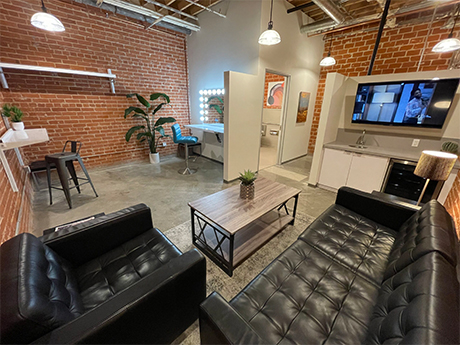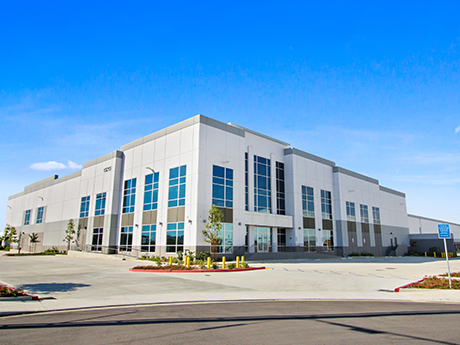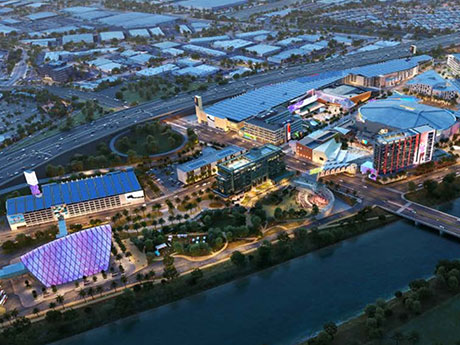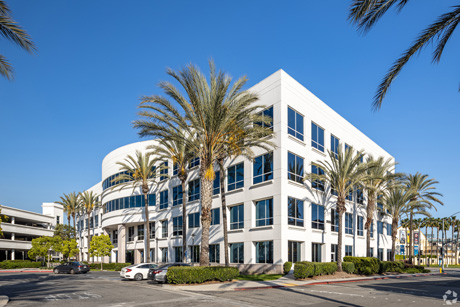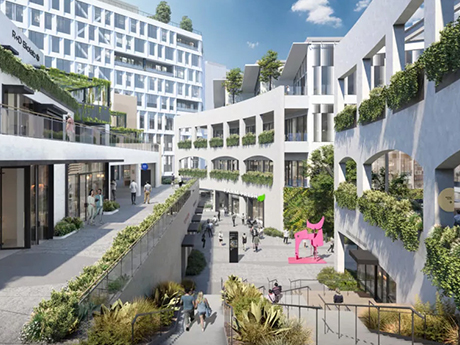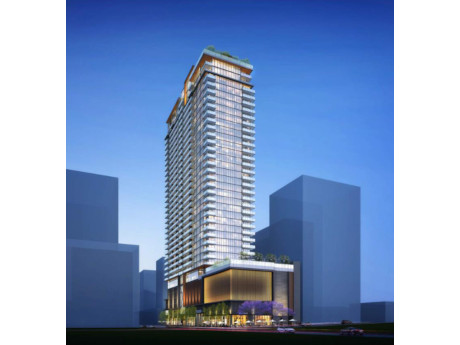— By Dina Gouveia and Louis Thibault — The San Francisco market ended the second quarter of 2023 with a 27.2 percent vacancy rate for the office sector, according to Avison Young’s market report. As companies scaled back operations and experienced slower growth, vacancy rates continued to increase. As of late, we are seeing many tenants in a wait-and-see mode when it comes to leasing decisions. This is despite a majority of companies desiring to have employees back in the office. Below are a few key trends and observations when it comes to the office market, as well as some green shoots where we see opportunities for an accelerated recovery. Return to the Office The slow return to office (RTO) largely comes down to overall economic conditions and who has the upper hand in the job market. The trend that we’ve seen in the San Francisco region is that larger tech companies like Apple and Google have led the RTO efforts with CEOs like OpenAI’s Sam Altman opining that remote work is essentially detrimental to collaboration and creativity. It appears there is a widespread appetite to bring employees back into the office full-time. As the job market continues to soften, …
Market Reports
— By Nellie Day — Santa Monica, Calif.-based BLT Enterprises has been an owner, investor, developer and manager of commercial properties since 1984. The firm has seen a lot of changes over that time, which means adaptability remains key to its strategy — and long-term survival. One of the ways the firm is adapting to current market conditions is through the acquisition and operation of production studios and soundstages. The most recent data on usage and demand for these product types is from the year 2020. At this time, CBRE noted there was 11 million square feet of soundstage space in North America, with half of it being in Los Angeles. Speaking of 2020, the pandemic was also responsible for a 74 percent year-over-year increase in streaming video demand. FilmLA’s 2020 Sound Stage Production Report also noted the industry maintained an average occupancy of 94 percent that year, with the report further showing television production increased 10 percent in 2020. For comparison, studio occupancy averaged 70 percent in 2017. Though the world isn’t locked down the way it was in 2020, digital content demand shows no signs of slowing down. Consumers will spend an estimated $151 billion on technology services, …
— By John Wadsworth and Aaron Phillip, Colliers — The Orange County medical office building (MOB) market continues to show resilience post-pandemic despite headwinds of the new interest rate environment. The overall Orange County MOB market consists of 10 million square feet with a current vacancy of 8.5 percent, down 100 basis points from the end of 2022. The average rental rate is $3.48 per square foot, per month, full-service growth, with an increase of 9.3 percent from mid-year 2022. The lack of significant MOB construction completions, coupled with much of the existing vacancy found in older, functionally obsolete buildings, has kept supply largely in line with demand. The velocity of MOB leasing activity has softened compared to pre-pandemic transaction volume, with healthcare providers still digging out of the financial “COVID hole.” Among other market pressures, labor costs and retention across healthcare employment significantly contribute to continued narrow margins on provider balance sheets. From larger health systems to smaller independent practices, all have been impacted, slowing the pace of expansion projects and mandating shorter, more flexible transactions until more permanent real estate solutions can be implemented. Despite the market challenges posed by the pandemic, MOB absorption has remained positive countywide, …
— By Gabe Kadosh, Vice President at Colliers in Los Angeles — Retail leasing activity in Los Angeles is robust. Demand is particularly strong in the home/furniture industries. The quick-service restaurant segment is another one that continues to grow, with a large uptick in demand for drive-thru accommodations. Now, for the good news — or bad news, depending on whether you’re a landlord or tenant. Los Angeles remains a tenant market. There is currently too much available retail space. Oftentimes, retail tenants can simply go across the street if they find a particular landlord’s rent — or lease terms — unfavorable. The current vacancy rate for retail in Greater Los Angeles stands at about 6 percent. Significant concessions and incentives are being offered in various regions of Los Angeles. Downtown Los Angeles is seeing the largest number of concessions. That’s because the office market has been shuttered so dramatically, thanks to the pandemic and the work-from-home trend that just won’t go away. This has caused some Downtown mixed-use office and retail landlords to offer base CAM or even no rent just to keep the doors open. In other cases, some retail tenants only pay a percentage of sales with no …
— By Christopher J. Destino, Principal, Lee & Associates — The geographic area along the border of Los Angeles and Orange County is locally known as the Mid Counties market. This region currently boasts about 130 million square feet of industrial real estate, thanks to its prime location. This is a location that’s only 25 miles from the ports of Long Beach and Los Angeles, and 20 miles from Los Angeles International Airport (LAX). Like many other parts of the U.S., Mid Counties has begun to see the effects of continued economic uncertainty and a rising interest rate environment. It faces challenges like land scarcity and limited newly constructed buildings to accommodate the growing demand. Thankfully, this area still typically delivers 200,000 to 500,000 square feet of new construction annually (2018 was abnormally high with about 2 million square feet added). One recent deal worth noting is the 94,000-square-foot, Class A industrial distribution building in Santa Fe Springs from Panattoni that leased to BeBella Cosmetics for $2.05 per square foot net per month with an option to purchase at $577 per square foot. Another new development example is the 146,617-square-foot building that Duke Realty developed and leased to Weee!, a …
— By Gleb Lvovich, Managing Director, and Daniel Tyner, Senior Director, JLL Capital Markets — The commercial real estate market across all asset classes has seen a slowdown in transaction activity in 2023 compared to 2022 and 2021 largely due to the rapid increase in borrowing costs for investors. This might have impacted the commercial real estate sector as a whole, but shopping centers in Orange County are still buzzing with consumers as occupancy remains robust. Orange County has continuously proved to be one of the most sought-after markets to invest in retail due to its strong demographics, population growth and overall fundamentals. Investor Demand Shopping center performance in Orange County has been excellent over the past few years, and investors see this trend continuing for the foreseeable future. Low vacancy and strong tenant demand has allowed investors to experience significant rent growth at their properties. Orange County has experienced particularly strong grocer performance and expansion. Historically, shopping center transactions have been very limited in Orange County. This has further driven investor demand due to the lack of available investment opportunities. The few listings that exist generate significant interest. Recent examples include the sale of Ralph’s- and Rite Aid-anchored Brea …
— By Brian C. Childs, Executive Managing Director, NAI Capital Commercial — Orange County office has historically been last in and first out of any recession or economic setback. That trend continues as an office recovery is in sight in this post-COVID marketplace. The challenge of encouraging workers to return to the office post-pandemic has slowed considerably. The rate of space being vacated in Orange County’s office market slowed to less than a 1 percent increase quarter over quarter in vacant space in the second quarter of 2023. This is compared to the 17 percent year-over-year rise, resulting in a total of 20.9 million square feet of vacant office space. Similarly, the growth rate of available sublease space also experienced a slower pace of 0.2 percent quarter over quarter, compared to a 23.4 percent year-over-year increase, reaching 4.6 million square feet. The second-quarter office vacancy rate sits at 13.3 percent, versus 13.2 percent in the first quarter. Overall office vacancy was at 11.5 percent a year ago. As the availability of office space has begun to stabilize, the average asking rent remained unchanged compared to the previous quarter. There was a minor decline of …
— By Jerry Holdner, Avison Young — Southern California Region Lead, Innovation & Insight, AVANT — The San Diego office market is starting to show signs of weakness. Unemployment remains low, but it is important to highlight that job creation has been uneven. The bright spot is that high-value-added jobs in a broad range of sectors, such as scientific research, medical products and pharmaceutical development continue to grow, which bodes well for San Diego. We are still uncertain about a recession. It could be short and shallow like many are predicting, or we could be in for a period of monumental headwinds. Investment sales have retreated as interest rates increased, and office workers have been reluctant to return to the office. This has created an uncertain picture of our office market going forward. The rise and future uncertainty of the pace of inflation has caused many to take a “pencils down” approach. This has caused many to slow, pause or even halt their dealmaking, growth, capital investment and development efforts as the ability to borrow funds has become difficult. San Diego’s office vacancy currently stands at 12.3 percent, and 18.9 percent of the total office market is available (including sublease …
— By Chad O’Connor, Executive Managing Director, Capital Markets, Marcus & Millichap Capital Corp. — Financing continues to be challenging for multifamily, whether in San Diego County or elsewhere. We have noticed a general shift in the market where the usual players are moving to the sidelines, thereby allowing new developers to enter the field. Many of the new developers do not have a track record that encourages a lender to underwrite a transaction. The more seasoned developers are focused on smaller developments with a higher probability of securing financing. The redirection to smaller developers in San Diego has directly impacted the institutional market. Despite this, we are still financing a lot of deals and capital is, indeed, available. Having proprietary programs in the market — especially on the bridge side of things — continues to keep us both busy and adding value for our clients. The lack of go-to lenders in the market is driving us to forge new relationships with growing lenders, building those connections, and paving way for future opportunities. Timing is a crucial variable when securing financing. Locking in the most favorable interest rates and moving swiftly through the closing process is very important in dynamic …
— By Reg Kobzi, Senior Vice President, CBRE — Despite economic headwinds and uncertainty, there remains a positive sentiment within the San Diego retail market due to the historically low vacancies that continue to persist quarter over quarter. Inflation across consumer categories erodes spending power and challenges the retail landscape, as well as the greater economy. Landlords proactively track consumer spending and tenant resilience to mitigate risk. Inflation has proven stubbornly high, but it is predicted to decline over the coming months as the economy cools. CBRE believes the rate hiking cycle is nearing an end, and the Feds should start to cut rates by the end of the year. Despite the economic challenges, San Diego is healthy as its unemployment rate has remained relatively steady and seen significantly less expansion than at the state and national levels. June is the 35th consecutive month that unemployment in San Diego was below the state norm and the 12th straight month below the U.S. average. San Diego retail vacancy stabilized at the beginning of 2023, mirroring the rate from the last quarter of 2022 of 4.9 percent. Since vacancy rates are indicators of the market’s overall health, this stabilization is a valuable …



